Tianminlou – A Small History of Chinese Ceramics
Unknown Delights from the Tianminlou Collection
Regina Krahl
The Tianminlou collection, assembled by Ko Shih Chao, better known as S.C. Ko (1911 – 1992), can be considered one of the most remarkable private assemblages of Chinese ceramics. It is most famous for porcelains from the Jingdezhen kilns of the Yuan (1279-1368), Ming (1368-1644) and Qing (1644-1911) dynasties and its name does first of all evoke blue-and-white porcelain – a section that is particularly strong and representative. A fine selection of its Ming and Qing porcelains was recently sold in these rooms, 3rd April 2019. S.C. Ko was not only a discerning collector, but above all had himself an excellent understanding of the subject, without which the collection could not have achieved its high standard. He was chairman of the honourable Min Chiu Society of collectors and actively involved in the affairs of all the relevant Hong Kong museums, the Hong Kong Museum of Art, the Art Gallery of the Chinese University of Hong Kong and the Fung Ping Shan Museum of Hong Kong University, and was of course a generous lender to exhibitions. The Tianminlou name became internationally known through the special exhibition of the collection at the Hong Kong Museum of Art in 1987, for which a superbly produced bi-lingual two-volume publication was produced, Chinese Porcelain. The S.C. Ko Tianminlou Collection,with contributions by John Ayers, Julian Thompson, Laurence C.S. Tam and S.C. Ko himself.
In generously subsidizing it, so that it could at the time be offered at an unusually low price, S. C. Ko assured its wide distribution. The educational aspect and the wish to share his collection with a large audience were always matters of great importance to him. He always made his pieces readily available to the scholarly community, to students as well as fellow collectors, to be physically handled, studied and discussed. The wide range of the group of ceramics offered here may come as a surprise to anyone familiar with the Tianminlou name, as most pieces have not been published before; but it reflects the collector’s broad interest in the subject.
It leads us through the best part of China’s ceramic history, starting with an iconic type of vessel from the early stoneware production, in the Jin dynasty (265 – 420), of the Yue kilns in Zhejiang, a chicken-head ewer. The colourful sancai wares made in north China are represented by examples from the Tang (618-907), Liao (907-1125) and Jin (1115-1234) periods. Most of the major Song (960-1279) kilns are included, with good examples of white wares from the Ding (Hebei), Huozhou (Shanxi) and Jingdezhen (Jiangxi) manufactories, celadons from Longquan (Zhejiang), Jun wares from Henan and a brown bowl from Yaozhou (Shaanxi). An exceptional piece of the Yuan dynasty is the blue-and-white spouted bowl with its lively painting of water fowl and lotus plants, striking in shape and delightful in its decoration. The Ming and Qing dynasties are represented with blue-and-white, monochrome and various polychrome styles; only three shall be mentioned here: the square wucai jar of Jiajing mark and period (1522-1566), the pair of yellow saucers of Yongzheng mark and period (1723-1735) and the pair of little lotus-bouquet dishes in blue-and-white, of Qianlong mark and period (1736-1795).
The hall name, Tianminlou, that was chosen for the collection, is deeply anchored in China’s classical literature. It can be traced to a short autobiographical piece by Tao Yuanming (365-427), one of China’s most revered poets, where he describes a ‘Mr Five Willow Trees’ as living the Daoist ideal of a poor but free life, keen to increase his knowledge, but uninterested in personal recognition, fame, or even just approval of society. In the last line of his story Tao asks ‘Is he perhaps one of Emperor Getian’s people?’ (‘Getian … min …’), Emperor Getian being a mythical ruler of a prehistoric past marked by simplicity and happiness. Ge is the modern transcription of the family name Ko and Tianminlou only makes sense in combination with this family name, lou denominates a lofty pavilion. ‘[S.C.] Ko Tianminlou’ (Getian min lou) may thus perhaps be understood as ‘The Pavilion of One of Getian’s People’.
Lot 1. A 'Yue' celadon chicken-head ewer, Jin dynasty (1115-1234); 13.8 cm, 5 3/8 in. Estimate 40,000 — 60,000 HKD. Lot sold 87,500 HKD. © Sotheby's.
the compressed globular body rising from a low foot to a waisted neck with galleried rim, flanked by a chicken-head spout opposite a curved handle ending with a dragon head biting the mouthrim, the shoulder further set with two lug handles.
Note: Chicken-head ewers are perhaps the most distinctive and representative ceramic vessels of the tumultuous, yet innovative period between the Han (206 BC to AD 220) and Tang dynasties (618-907). Production began in the Jin dynasty (265-420) by the southern Yue kilns of Zhejiang province, but was soon copied by other southern manufactories and later adopted by northern celadon kilns.
The wide use of such ceramics, including the tombs of emperors, reflects the auspicious symbolism of the chicken motif. Chickens were believed to have the power to exorcise evils, cure diseases and have other beneficent effects. Images of chickens were therefore painted and real chickens or replicas in cast metal or carved wood were hung on front doors.
Compare a slightly larger chicken-head ewer recovered from Yuyao city, Ningbo, illustrated in The Complete Works of Chinese Ceramics, vol. 4, Shanghai, 2000, pl. 182; another sold in our London rooms, 21st June 1983, lot 168; and a third from the collection of Dr Ip Yee, sold in these rooms, 19th November 1984, lot 150. See also six chicken-head ewers of various sizes, but with undecorated handles, included in the exhibition Animal Farm in Yue Ware, Uragami Sōkyu-dō, Tokyo, 1992, cat. nos 84-89.
Lot 2. An amber-glazed figure of a standing groom, Tang dynasty (618-907); 23.6 cm, 9 1/4 in. Estimate 40,000 — 60,000 HKD. Lot sold 87,500 HKD. © Sotheby's.
depicted wearing a cap picked out in black pigment, standing on a square base with his hands clasped beneath the long sleeves of his belted robe, his garments applied with an amber-chestnut glaze, wood stand.
Provenance: Sotheby’s New York, 25th October 1975, lot 119.
Sotheby’s Hong Kong, 12th/13th May 1976, lot 12.
Note: Sancai models of grooms of this delicately modelled style were created to accompany figures of horses, usually the celebrated Ferghana horses treasured at the Tang court. For a Tang white-glazed horse and groom group, see The Complete Works of Chinese Ceramics, vol. 6, Shanghai, 2000, pl. 81.
See also a groom of this type, described as Western Turkic, in the Mr. and Mrs. Ezekiel Schloss Collection is illustrated by E. Schloss, Foreigners in Ancient Chinese Art, vol. II, New York, 1969, pl. 10a. A figure modelled in a similar pose, was sold in our New York rooms, 4th June 1982, lot 112; a slightly larger one was sold in these rooms, 30th March 1978, lot 119; and another was sold in our London rooms, 13th/14th November 1972, lot 285.
Lot 3. A sancai 'foliate' vase, Tang dynasty (618-907); w. 13 cm, 5 1/8 in. Estimate 40,000 — 60,000 HKD. Lot sold 87,500 HKD. © Sotheby's.
the compressed globular body rising from a short foot to a waisted neck and everted galleried rim, the lower body applied with three upright curled leaves each detailed with carved veins, splashed overall with green, ochre and straw-coloured glazes, the splashes falling in streaks and stopping irregularly to reveal the buff-coloured body.
Lot 4. A sancai 'chrysanthemum' square dish, Liao dynasty (907-1125); 12.5 cm, 4 7/8 in. Estimate 80,000 — 120,000 HKD. Lot sold 125,000 HKD. © Sotheby's.
with everted sides rising from a flat base to a foliate rim, the interior moulded in shallow relief with a large chrysanthemum bloom wreathed in trefoil leaves, the sides divided by ridges into panels, each panel enclosing a flower bloom and floral scrolls, all in chestnut and green glazes reserved on a cream ground, the exterior applied with a chestnut glaze stopping above the base.
Lot 5. An incised sancai 'Fish' dish, Liao-Jin dynasty (907-1234); 14.6 cm, 5 3/4 in. Estimate 60,000 — 80,000 HKD. Lot sold 200,000 HKD. © Sotheby's.
with shallow rounded sides supported on a short foot, the interior carved and decorated with a yellow-bordered medallion enclosing a fish swimming among water weeds, all in yellow, cream and brown glazes against a green ground, the underside unglazed.
Provenance: Acquired in Hong Kong in 1983.
Exhibited: Chugoku meito ten: Chugoku toji 2000-nen no seika [Exhibition of Chinese Pottery: Two Thousand Years of Chinese Ceramics], Tokyo, 1992, cat. no. 37.
Lot 6. A pair of small Qingbai lobed dishes, Song dynasty (960-1279); 10.8 cm, 4 1/4 in. Estimate 30,000 — 40,000 HKD. Lot sold 60,000 HKD. © Sotheby's.
each with rounded sides rising from a flat base to a gently flared ten-lobed rim, divided with ridges evenly radiating around the cavetto separating the petals, applied overall save for the base with a blue-tinged transparent glaze.
Lot 7. A rare Huozhou white-glazed stem bowl, Song dynasty (960-1279); 10.8 cm, 4 1/4 in. Estimate 200,000 — 300,000 HKD. Lot sold 250,000 HKD. © Sotheby's
the bowl of compressed globular shape with an incurved rim, supported on a hollow splayed stem with upturned footrim, applied overall save for a ring on the interior with a translucent ivory-coloured glaze with darker teardrops.
Provenance: Sotheby's New York, 22nd February 1973, lot 75.
Sotheby's New York, 23rd October 1976, lot 214.
Collection of the British Rail Pension Fund.
Sotheby's London, 12th December 1989, lot 72.
Note: Notable for its lustrous and creamy-white glaze, this stem bowl was likely made at the Huozhou kilns, which was renown for producing fine quality white wares inspired by the celebrated Ding wares of the Northern Song dynasty (960-1127). Located near the town of Chencun, Shanxi province, the kiln complex is believed to be the same mentioned by Cao Zhao in his Gegu yaolun (Essential Criteria of Antiquities) from 1388, where he notes that ‘Peng Junbao copied ancient Ding wares making “waisted” vessels which were very neat. The white ones are similar to Ding wares’ (Kiln Sites of Ancient China. Recent Finds of Pottery and Porcelain, British Museum, London, 1980, p. 102).
White-glazed stem bowls of this unusual form, with a short flaring foot and a slightly incurved rim are rare. Compare a stem bowl of rounded form and the foot with raised ribs, illustrated in Porcelains of Yuan Dynasty Collected by the Palace Museum II, Beijing, 2016, pl. 277, together with an example with flared and lipped rim, pl. 278; and another with a shorter foot, sold in our London rooms, 15th June 1982, lot 222.
Lot 8. A Longquan celadon Ruyi-handled mallet vase, Song dynasty (960-1279); 17 cm, 6 3/4 in. Estimate 200,000 — 300,000 HKD. Lot sold 275,000 HKD. © Sotheby's
of mallet-form flanked by ruyi-shaped handles joined by a raised rib, applied overall with an even sage-green glaze draining to a paler tone at the edges, the knife-pared foot left unglazed and burnt orange in the firing, wood stand.
Provenance: Acquired in Hong Kong in 1985.
Note: Longquan vases of this distinct shape were seldom made with handles in the form of lingzhi, although three related examples are known; one is illustrated in Longquan qingci [Longquan celadon], Beijing, 1966, p. 40; another was sold in these rooms, 14th May 1983, lot 452; and a third was sold in our London rooms, 9th June 1987, lot 182.
This particular form, which was popular in the Song dynasty, is believed to have been inspired by glass vases made in the Middle East, possibly Iran. A glass bottle probably from Nishapur, was recovered at the tomb of the Princess of Chen of the Liao dynasty (907-1125), dating to no later than 1018 and illustrated in Grand View: Special Exhibition of Ju Ware from the Northern Sung Dynasty, National Palace Museum, Taipei, 2007, p. 121, fig. 2. Furthermore, fragments of glass vases of this form were recovered from the cargo of the Intan shipwreck, which sank off the Indonesian coast, and is believed to date to the Northern Song period.
Lot 9. A Yaozhou persimmon-glazed bowl, Northern Song dynasty (960-1279); 17 cm, 6 3/4 in. Estimate 150,000 — 200,000 HKD. Lot sold 375,000 HKD. © Sotheby's
elegantly potted, of shallow conical form, supported on a neatly cut, slightly splayed foot, covered overall in a glossy persimmon-coloured glaze, the knife-pared foot left unglazed revealing a smooth pale greyish-brown stoneware body.
Lot 10. An incised Dingyao cup, Northern Song dynasty (960-1127); 9.3 cm, 3 5/8 in. Estimate 100,000 — 150,000 HKD. Lot sold 375,000 HKD. © Sotheby's
with rounded sides supported on a neatly knife-pared foot, the interior swiftly incised with a lotus bloom and broad leaves borne on curling stems, the exterior encircled with a carved line around the lower body, applied overall with an ivory-tinged transparent glaze, metal-bound rim.
Provenance: Christie's Hong Kong, 20th March 1990, lot 512.
Lot 11. An incised Dingyao 'Lotus lobed-dish, Song dynasty (960-1279); 21.1 cm, 8 1/4 in. Estimate 400,000 — 500,000 HKD. Lot sold 625,000 HKD. © Sotheby's
with rounded sides rising from a short foot to a gently flared six-lobed rim, the interior decorated with a medallion enclosing a lotus bloom and broad furled leaves borne on curling stems, the cavetto divided with ridges demarcating the petals, applied overall with an ivory-tinged transparent glaze
Provenance: Bluett & Sons, London (label).
Collection of Amber Blanco White (1887–1991).
Bonhams London, 16th June 1982, lot 132.
Lot 12. A Junyao blue-glazed dish, Northern Song dynasty (960-1127); 9.3 cm, 3 5/8 in. Estimate 250,000 — 300,000 HKD. Lot sold 875,000 HKD. © Sotheby's
sturdily potted with shallow rounded sides rising from a short tapering foot to a flat everted rim, covered overall save for the footring with a milky-blue glaze thinning to a mushroom colour at the rim, the base with three spur marks.
Provenance: John Sparks Ltd, London (label).
Collection of Amber Blanco White (1887-1991).
Bonhams London, 16th June 1982, lot 148.
Note: The shallow and sturdy form of this dish, with a wide everted rim, represents a classic shape of Jun ware produced at kilns in Henan province. One of the ‘Five Classic Wares’ of the Song dynasty, these wares are known for their ravishing blue glazes, which were not achieved from pigment but from an optical illusion where minute spherules of glass in the glaze scattered blue light. Unlike the other classic wares of the Song dynasty, the porous and thick body of Jun ware was best suited for simple forms, such as this charming dish.
Two slightly smaller dishes in the collection of the Palace Museum, Beijing, are illustrated in Selection of Jun Ware. the Palace Museum’s Collection and Archaeological Excavation, Beijing, 2013, pls 18 and 19; two slightly larger dishes were sold in our London rooms, the first from the collection of Edward T. Chow, published in Basil Gray, Early Chinese Pottery and Porcelain, London, 1952, pl. 84, sold 16th December 1980, lot 272, and the second, 10th December 1991, lot 133; and another dish was sold in our London rooms, 10th December 1991, lot 133.
Compare also two dishes that were fired on five spurs, in the National Palace Museum, Taipei, illustrated in A Panorama of Ceramics in the Collection of the National Palace Museum. Chün Ware, Taipei, 1999, pls 54 and 55; a dish in the Idemitsu Museum of Arts, Tokyo, illustrated in Chinese Ceramics in the Idemitsu Collection, Tokyo, 1987, pl. 495; and a further dish from the Sir Percival David collection, now in the British Museum, London, published in Illustrated Catalogue of Ru, Guan, Jun, Guangdong and Yixing Wares in the Percival David Foundation of Chinese Art, London, 1999, pl. A66.
Lot 13. A Junyao purple-spashed bowl, Northern Song-Jin dynasty (960-1234); 11 cm, 4 3/8 in. Estimate 150,000 — 200,000 HKD. Lot sold 937,500 HKD. © Sotheby's
with deep rounded sides rising from a short foot to a gently incurved rim, the exterior liberally splashed with large vibrant patches of purple, applied overall with a greyish-blue glaze save for the foot and an unglazed circle on the interior.
Provenance: Sotheby's Hong Kong, 20th May 1986, lot 6.
Note: This bowl is remarkable for its dramatic deep-purple splash on the exterior, boldly applied to form an undulating pattern that moves through the sides of the vessel. The variegated splashes stand against an attractive light blue glaze, which covers the entire vessel save for the footrim and a small area on the interior. The latter suggests that this piece was fired together with another smaller vessel that stood in its interior.
A bowl with a similar bold pattern on the exterior, from the collection of Mrs Alfred Clarke, now in the Matuoka Art Museum, Tokyo, included in the Museum’s Exhibition of Famous Pieces of Chinese Pottery and Porcelain from the Matsuoka Collection, Japan, 1983, cat. no. 37, was sold in our London rooms, 25th March 1975, lot 93; and another from the collection of Stephen D. Winkworth, was sold in our London rooms, 25th April 1947, lot 203. See also a bowl of similar form but lacking the splashes, in the Musée Guimet, Paris, illustrated in Oriental Ceramics. The World’s Great Collections, vol. 7, 1981, col. pl. 71; and another in the Metropolitan Museum of Art, New York, published in Suzanne G. Valenstein, A Handbook of Chinese Ceramics, New York, 1989, pl. 39 (left).
Lot 14. A Ge-type lobed dish, Ming dynasty (1368-1644); 12.8 cm, 5 in. Estimate 40,000 — 60,000 HKD. Lot sold 75,000 HKD. © Sotheby's
the rounded sides rising from a gently tapered foot to a five-lobed rim, covered overall in a soft grey glaze suffused with a network of black crackles, the glaze stopping neatly at the footring.
Provenance: Sotheby's Hong Kong, 20th November 1985, lot 40.
For the prototype of this form and glaze, see several petal-lobed dishes of various sizes, in the Palace Museum, Beijing, illustrated in Selection of Ge Ware, Beijing, 2017, pls 42-46 and 63.
Conpare also a Ming dynasty Xuande mark and period dish, of circular form, now preserved in the Palace Museum, Beijing, illustrated in the exhibition catalogue Power and Glory: Court Arts of China's Ming Dynasty, Asian Art Museum, San Francisco, 2008, pl. 76.
Lot 15. A Longquan celadon 'Lotus' bowl, Song dynasty (960-1279); 21.1 cm, 8 1/4 in. Estimate 40,000 — 60,000 HKD. Lot sold 68,750 HKD. © Sotheby's
with deep rounded sides supported on a short foot, the exterior decorated with lotus petals, covered overall save for the footring in a sage-green glaze.
Lot 16. A Longquan celadon jar, Song dynasty (960-1279); 21.1 cm, 8 1/4 in. Estimate 120,000 — 180,000 HKD. Lot sold 87,500 HKD. © Sotheby's
the ovoid body rising from a recessed base to a stepped shoulder and surmounted by a wide upright neck, the shoulder set with five upright tubular spouts, covered overall in an olive-green glaze.
Lot 17. A blue and white 'Egrets and Lotus' pouring bowl, yi, Yuan dynasty (1279-1368); 16.5 cm, 6 1/2 in. Estimate 350,000 — 450,000 HKD. Lot sold 1,375,000 HKD. © Sotheby's
the rounded sides supported on a flat base, set on one side with an outward flaring spout above a fine coiled band of clay attached as a lug underneath, the interior painted with a medallion enclosing three egrets underneath tall stalks issuing a lotus blossom and large furled leaves, surrounded by a classic scroll on the cavetto, the exterior encircled with lotus lappets, the rim and base unglazed.
Acquired in Japan, 2nd July 1990.
Exhibited: Blue and White Porcelain from the Tianminlou Collection, Chang Foundation, Taipei, 1992, cat. no. 15.
Tianminlou qinghua ci tezhan [Special exhibition of blue and white porcelain from the Tianminlou collection], Shanghai Museum, Shanghai, 1996.
Literature: Blue and White Porcelain from the Collection of Tianminlou Foundation, Shanghai, 1996, pl. 17.
Zhongguo meishu fenlei quanji. Zhongguo taoci quanji [The Complete Works of Chinese Ceramics. Yuan], Shanghai, 2000, vol. 11, pl. 215.
Note: Known as yi, bowls of this form appears to have been used as pouring vessels together with yuhuchun vases. Chiumei Ho in ‘Social Life Under the Mongols as Seen in Ceramics’, Transactions of the Oriental Ceramic Society, vol. 59, 1994-95, p. 44, notes that in archaeological contexts they are often found together with such vases and wine cups. This pairing is also depicted in a wall painting from the tomb of Zhang Andabuhua and his wife, which has been dated to 1269 A.D., and is illustrated in the catalogue to the exhibition The World of Khubilai Khan. Chinese Art in the Yuan Dynasty, The Metropolitan Museum of Art, New York, 2010, p. 83, fig. 115.
Bowls of this form were probably inspired by metal prototypes, such as the silver pouring bowl excavated together with a yuhuchun ping from a hoard in Hefei, Anhui province, illustrated ibid., p. 287, figs 330 and 331. These bowls were also used also by Mongols in Iran, as exemplified by the bowl painted in the Enthronement Scene, part of the album Jami al-tavarikh(Compendium of Chronicles), which was commissioned between the reigns of Ghazan (r. 1295-1304) and his brother, Öljeitü (r. 1304-1316), a version of which is in the Staatsbibliothek zu Berlin, and included in the exhibition The Legacy of Genghis Khan. Courtly Art and Culture in Western Asia, 1256-1353), The Metropolitan Museum of Art, New York, 2002, cat. no. 19, fig. 84.
Spouted bowls painted with this motif of egrets in a lotus pond are rare, although a bowl with a similar motif painted in underglaze red, from the Meiyintang collection, illustrated in Regina Krahl, Chinese Ceramics from the Meiyintang Collection, vol. 2, London, 1994, pl. 632, was sold in these rooms, 8th April 2013, lot 34.
Compare also a blue and white pouring bowl painted with mandarin ducks from the collection of David L. Nathan, now in the National Gallery of Victoria, sold in our London rooms, 15th May 1962, lot 55; one painted with a hare in the British Museum, London, illustrated in Jessica Harrison-Hall, Catalogue of Late Yuan and Ming Ceramics in the British Museum, London, 2001, cat. no. 1:22; and another with two phoenixes excavated at Siwa village, Yaxia town, Gansu province, and now in the Lintao County Museum, included in the exhibition Splendors in Smalt: Art of Yuan Blue-and-white Porcelain, Shanghai Museum, Shanghai, 2012, cat. no. 42.
Lot 18. A wucai 'Baxijian and lotus' jar, Mark and period of Jiajing (1522-1566); 12 cm, 4 3/4 in. Estimate 400,000 — 600,000 HKD. Lot sold 437,500 HKD. © Sotheby's
of square baluster form surmounted by an upright neck, the exterior painted with eight lotus blossoms borne on a meandering leafy scroll, each lotus beneath one of the bajixiang emblems, all between a ruyi-border at the shoulders and lappets encircling the foot, the neck collared by a key-fret border, the recessed base inscribed in underglaze blue with a six-character reign mark within a double-square, wood stand.
Provenance: Sotheby's Hong Kong, 19th November 1986, lot 213.
Exhibited: Chinese Porcelain in the S.C. Ko Tianminlou Collection, Hong Kong Museum of Art, Hong Kong, 1987, cat. no. 72.
Literature: Liu Liang-yu, A Survey of Chinese Ceramics, vol. 4: Ming Official Wares, Taipei, 1991, p. 204 (bottom).
Compare three jars of this type sold in our London rooms, the first, from the collection of Stephen D. Winkworth, 25th April 1933, lot 347, the second with cover, from the collection of Lord Hollenden, 27th November 1973, lot 297, and the third of slightly larger size, from the Joseph M. Morpurgo collection, 11th May 2016, lot 171; two jars sold at Christie’s London, 21st April 1986, lots 412 and 413, the former sold again in our London rooms, 12th December 1989, lot 309; and a further example sold at Christie’s Hong Kong, 5th/6th September 1997, lot 1051.
This motif continued to be popular in the succeeding Wanli reign (r. 1573-1620), when it was used on jars of globular shape; see for example a Wanli mark and period jar in the Shanghai Museum, illustrated in Lu Minghua, Mingdai guanyao ciqi [Ming imperial porcelain], Shanghai, 2007, pl. 4-23; and another, from the collection of Kwong Yee Che Tong, included in the exhibition The Fame of Flame. Imperial Wares of the Jiajing and Wanli Periods, Art Gallery, The Chinese University of Hong Kong, Hong Kong, 2009, cat. no. 107.
Lot 19. A pair of blue and white 'dragon' cups, Qing dynasty, Kangxi perio (1662-1722); 9.6 cm, 3 3/4 in. Estimate 80,000 — 120,000 HKD. Lot sold 100,000 HKD. © Sotheby's
each of ogee form, the interior decorated around the cavetto with two dragons striding among flame wisps, the exterior decorated with cresting waves near the foot, the base inscribed with an apocryphal six-character Chenghua mark within a double circle
Provenance: Acquired from Xinzhong Co., Hong Kong, 30th November 1974.
Lot 20. A fine Ming-style white-glazed anhua-decorated bowl, Mark and period of Kangxi (1662-1722); 14.9 cm, 5 7/8 in. Estimate 500,000 — 700,000 HKD. Lot sold 687,500 HKD. © Sotheby's
with deep rounded sides rising from a tapered foot to a gently flared rim, the exterior decorated in the anhua technique with six stylised lotus blooms borne on an undulating foliate scroll, above a stylised pomegranate border above the foot and a classic scroll encircling the foot, the interior with a medallion enclosing a gnarled peach tree bearing nine ripe fruits, the base inscribed with a reign mark in underglaze blue within a double circle.
Provenance: Sotheby's Hong Kong, 15th May 1990, lot 67.
Note: This lotus scroll motif on this piece is rendered in the subtle anhua technique, or hidden decoration, a complicated and not yet fully understood manner of decoration that involved impressing the design into a layer of slip. First developed in the Song period (960-1279), this technique gained popularity during the early Ming dynasty (1368-1644), particularly in the reign of the Yongle Emperor (r.1403-1424), whose direct patronage of Buddhism also led to a renewed interest in monochrome white wares. The anhua technique was mastered in the Kangxi reign, with vessels displaying increasingly thin walls and sophisticated motifs. Porcelain vessels decorated in this technique required to be handled and inspected closely, as the motif is visible only when light shines through it.
In his strive to gain the influence and respect needed to rule over the predominantly Han-Chinese elite, the Kangxi Emperor took a keen interest in China’s history and culture and revived industries that had ceased production at the end of the Ming dynasty. Under the Kangxi Emperor’s patronage, the imperial kiln porcelain factory at Jingdezhen resumed production of imperial wares. The predominant aim for the Emperor appears to have been to regain standards of quality that had long been lost, and to employ ancient techniques in a new way. This bowl exemplifies this trend as it clearly references early Ming porcelain through its glaze and decoration. A white-glazed bowl from the Yongle period, decorated with a floral scroll, in the Palace Museum, Beijing, is illustrated in Imperial Porcelains from the Reigns of Hongwu and Yongle in the Ming Dynasty, Beijing, 2015, pl. 248.
A closely related pair of bowls was sold in these rooms, 17th November 1975, lot 144; another was sold at Christie’s Hong Kong, 26th September 1989, lot 690; a slightly smaller bowl was sold in our London rooms, 1st/2nd April 1974, lot 261; and another was sold in our New York rooms, 15th June 1983, lot 326, and at Christie’s New York, 21st September 2004, lot 261
Lot 21. A persimon-glazed tripo incense burner, Qing dynasty, Kangxi period (1662-1722); 12 cm, 4 3/4 in. Estimate 30,000 — 50,000 HKD. Lot sold 250,000 HKD. © Sotheby's.
the compressed globular body raised on three cabriole legs to a short waisted neck with two upright bamboo-form handles, the exterior with a raised fillet below the neck, covered overall save for a circle on the base with a glossy persimmon glaze, wood stand.
Provenance: Sotheby's Hong Kong, 27th May 1978, lot 539.
Lot 22. A pair of famille-verte 'Mythical Beast' vases, Qing dynasty, Kangxi period (1662-1722); 12 cm, 4 3/4 in. Estimate 60,000 — 80,000 HKD. Lot sold 75,000 HKD. © Sotheby's.
each with a baluster body divided into four bracket lobes, rising from a splayed foot to a tall neck, each lobe painted with a panel enclosing mythical beasts in a garden or scenes depicting flowers and birds, all between diapered bands interspersed with cartouches, the neck further decorated with auspicious emblems, wood stands.
Lot 23. A small coral-red glazed vase, Qing dynasty, Kangxi period (1662-1722); 10.8 cm, 4 1/4 in. Estimate 15,000 — 20,000 HKD. Lot sold 43,750 HKD. © Sotheby's.
the baluster body surmounted by a cylindrical neck and galleried rim, the exterior covered with a rich coral-red glaze, the interior and the base left white.
Provenance: Sotheby's Hong Kong, 26th November 1976, lot 156.
Lot 24. A small coral-red glazed waterpot, Qing dynasty, 18th-19th century; 8 cm, 3 1/8 in. Estimate 20,000 — 30,000 HKD. Lot sold 125,000 HKD. © Sotheby's.
with irregular sides rising from four short legs to an incurved rim with an undulating outline, the exterior decorated in relief with gnarled stems resembling coral branches, wood stand.
Provenance: S. Marchant & Son Ltd, London, 19th November 1976.
Lot 25. A teadust-glazed gourd-form waterpot, Qing dynasty, 18th-19th century; 8 cm, 3 1/8 in. Estimate 15,000 — 20,000 HKD. Lot sold 400,000 HKD. © Sotheby's.
of eight-lobed globular form resembling a gourd, surmounted by a metal cover with a stem-like finial, wood stand.
Provenance: Acquired in Hong Kong, 5th June 1977.
Lot 26. A teadust-glazed 'Double gourd' washer, Qing dynasty, 18th-19th century; 10.1 cm, 4 in. Estimate 15,000 — 20,000 HKD. Lot sold 250,000 HKD. © Sotheby's.
modelled in the form of two conjoined gourds, decorated with coiling tendrils around the rim, covered with a teadust glaze thinning to brown at the rim and raised edges, wood stand.
Provenance: Acquired in Hong Kong, 5th June 1977.
Lot 27. A celadon-glazed vase, Qing dynasty, 18th century; 17.5 cm, 6 7/8 in. Estimate 20,000 — 30,000 HKD. Lot sold 187,500 HKD. © Sotheby's.
the tapered body surmounted by angled shoulders and a tall columnar neck, the shoulders decorated with eight petal motifs, the body divided into eight panels with vertical lines, covered overall save for the footring in a pale green glaze.
Provenance: Sotheby's Hong Kong, 27th May 1978, lot 517.
Note: A vase of similar form and proportions and carved on the shoulders with petals, but with a slightly flaring rim, in the Fondation Baur, Geneva, is illustrated in John Ayers, The Baur Collection, vol. 3, Geneva, 1972, pl. A334; and a slightly larger one, from the collection of Hon. Mountstuart William Elphinstone, now part of the Sir Percival David collection in the British Museum, London, is published on the Museum’s website, accession no. PDF,B.569. Compare also a much larger vase of this type, covered in a lavender glaze, from the Edward T. Chow collection, sold in these rooms, 19th May 1981, lot 520.
Lot 28. A teadust-glazed incense burner, Qing dynasty, Qianlong period (1736-1795); 11.7 cm, 4 5/8 in. Estimate 30,000 — 50,000 HKD. Lot sold 375,000 HKD. © Sotheby's.
of bombé form supported on a short foot, set with two loop handles, the base with a wide unglazed ring covered with a dark brown slip, wood stand.
Provenance: Sotheby's Hong Kong, 24th/25th May 1979, lot 558.
Note: A censer of this type but with a shorter neck, in the Zhuyuetang collection, was included in the exhibition Mille Ans de Monochromes, Fondation Baur, Geneva, 2018, cat. no. 152; another in the Museum für Kunsthandwerk, Frankfurt am Main, is illustrated in Gunhild Gabbert, Chinesisches Porzellan, Frankfurt am Main, 1977, pl. 418; and a third of slightly larger size was sold in our London rooms, 2nd December 1997, lot 233.
Lot 29. A pair of yellow-glazed saucer dishes, Yongzheng mark and period (1722-1735); 10.9 cm, 4 1/4 in. Estimate 150,000 — 200,000 HKD. Lot sold 1,937,500 HKD. © Sotheby's.
each with rounded sides supported on a short foot, covered overall in an egg-yolk yellow glaze, the white base inscribed in underglaze blue with a reign mark within a double circle, wood stands.
Provenance: Collection of Edward T. Chow (1910-1980).
Sotheby's Hong Kong, 19th May 1981, lot 509.
Exhibited: The S.C. Ko Tianminlou Collection, Hong Kong Museum of Art, Hong Kong, 1987, cat. no. 140.
Note: A slightly larger Yongzheng mark and period dish of this type, from the collection of Brian S. McElney, now in the Museum of East Asian Art, Bath, was included in the Museum’s Inaugural Exhibition, Bath 1993, vol. 1, cat. no. 205; two dishes were sold in these rooms, one from the Hall family collection, 2nd May 2000, lot 549, and the other, 11th April 2008, lot 2976; a pair was sold in our London rooms, 18th June 1985, lot 173; and a dish from the collection of Paul Manheim, was sold at Christie’s New York, 20th March 1997, lot 126.
Lot 30. A pair of famille rose 'Bajixiang' bowls, Seal marks and period of Qianlong (1736-1795); 10.7 cm, 4 1/4 in. Estimate 150,000 — 250,000 HKD. Lot sold 625,000 HKD. © Sotheby's.
each with rounded sides rising from a short foot to a slightly flared rim, the exterior decorated with the beribboned bajixiang, the eight emblems arranged in pairs, all below a key-fret band and above ruyi heads in iron red, the foot encircled by a band of blue-enamelled dots against a yellow ground, wood stands.
Provenance: Acquired in Hong Kong, 2nd October 1976.
Bowls of this design were made from the Qianlong (1736-1795) through the Xuantong (1909-1911) reigns. Compare a pair of Jiaqing (1796-1820) mark and period examples from the Jingguantang collection, illustrated in The Tsui Museum of Art, Chinese Ceramics IV, Hong Kong, 1995, pl. 181; and a Daoguang (1821-1850) mark and period bowl with cover, sold in these rooms, 3rd/4th December 2015, lot 428.
Lot 31. A pair of Ming style blue and white 'Lotus Bouquet' saucer dishes, Seal marks and period of Qianlong (1736-1795); 9.3 cm, 3 5/8 in. Estimate 200,000 — 300,000 HKD. Unsold. © Sotheby's.
each with rounded sides rising from a tapered foot to a lipped rim, the interior painted with a medallion enclosing a beribboned bouquet of blooming lotuses, arrowheads and other water weeds, the exterior with a composite floral scroll, the base inscribed with a six-character seal mark.
Note: Dishes of this small size, painted with this elegant motif of a luxuriant lotus bouquet and the well undecorated are more commonly known with Yongzheng mark and of the period, such as a dish in the National Palace Museum, Taipei, included in the Museum’s Special Exhibition of K’ang-hsi, Yung-cheng and Ch’ien-lung Porcelain Ware from the Ch’ing Dynasty in the National Palace Museum, Taipei, 1986, cat. no. 32; a pair sold twice in our New York rooms, 11th May 1978, lot 288 and 5th May 1979, lot 5; and a dish sold in these rooms, 8th November 1982, lot 156.
The lotus bouquet, with its beribboned cluster of lotus blooms, leaves and water weeds, first appeared on blue and white porcelain in the Yongle period (1403-1424) and was revived in the early Qing dynasty. A Yongle dish painted with this design, and with a flower scroll on the well, from the Meiyintang collection, illustrated in Regina Krahl, Chinese Ceramics from the Meiyintang Collection, London, vol. 2, 1994, pl. 665, was sold at Christie’s London, 4th June 1973, lot 106, and in these rooms, 4th April 2012, lot 37.
Lot 32. A pair of blue and white 'Floral' bowls, Qing dynasty, Qianlong period (1736-1795); 18.2 cm, 7 1/8 in. Estimate 60,000 — 80,000 HKD. Lot sold 75,000 HKD. © Sotheby's.
each with deep rounded sides rising from a short foot to a flared rim, the exterior decorated with five large floral blooms borne on meandering leafy scrolls.
Provenance: Acquired in Hong Kong in 1979.
Lot 33. A doucai 'Bajixiang' cup, Shendetang hall mark, Qing dynasty, Daoguang period (1821-1850); 8.5 cm, 3 3/8 in. Estimate 15,000 — 20,000 HKD. Lot sold 18,750 HKD. © Sotheby's.
with deep rounded sides supported on a short foot, the exterior decorated with lotus scrolls below beribboned bajixiang emblems and a border enclosing bats and clouds, underglaze-blue Shendetang zhi hall mark.
Lot 34. A yellow-ground famille-rose sgraffiato 'Medallion' bowl, Seal mark and period of Daoguang (1821-1850); 15.1 cm, 6 in. Estimate 30,000 — 50,000 HKD. Lot sold 162,500 HKD. © Sotheby's.
painted on the exterior with four medallions of seasonal landscape scenes, each painted in enamels of famille-rose and grisaille, all reserved on a yellow sgraffiato ground picked out with feathery scrolls and enamelled with multi-coloured floral strapwork, the interior painted with a stylised octagonal rosette highlighted in gilt.
Provenance: Acquired in Hong Kong, 19th May 1980.
Note: A pair of Daoguang mark and period bowls of this design, in the Hong Kong Museum of Art, was included in the Museum’s exhibition The Wonders of the Potter’s Palette, Hong Kong, 1984, cat. no. 102; and single bowl in the British Museum, London, is illustrated in Soame Jenyns, Later Chinese Porcelain: The Ch’ing Dynasty (1644-1912), London, 1951, pl. CXIII. Further examples were sold at auction; a pair from the Meiyintang collection, was sold in these rooms, 4th April 2012, lot 52; and two pairs were sold in our London rooms, the first from the collection of B.C. Tattenhall, 12th December 1989, lot 432, and the second, 12th May 2010, lot 181.
Lot 35. A blue and white 'Three Frieds of Winter' bowl, Seal mark and period of Daoguang (1821-1850); 13.5 cm, 5 1/4 in. Estimate 80,000 — 120,000 HKD. Lot sold 250,000 HKD. © Sotheby's.
with deep rounded sides supported on a low foot, the exterior painted with the 'Three Friends of Winter', prunus, bamboo and pine, the interior with stylised clouds forming a vajra medallion.
Sotheby's. Tianminlou – A Small History of Chinese Ceramics, Hong Kong, 30 May 2019

/https%3A%2F%2Fprofilepics.canalblog.com%2Fprofilepics%2F1%2F0%2F100183.jpg)
/https%3A%2F%2Fstorage.canalblog.com%2F03%2F02%2F119589%2F96711876_o.jpg)
/https%3A%2F%2Fstorage.canalblog.com%2F11%2F31%2F119589%2F94773502_o.jpg)
/https%3A%2F%2Fstorage.canalblog.com%2F20%2F83%2F119589%2F94772815_o.jpg)
/https%3A%2F%2Fstorage.canalblog.com%2F26%2F72%2F119589%2F75604929_o.jpg)
/https%3A%2F%2Fstorage.canalblog.com%2F59%2F60%2F119589%2F26458628_o.jpg)







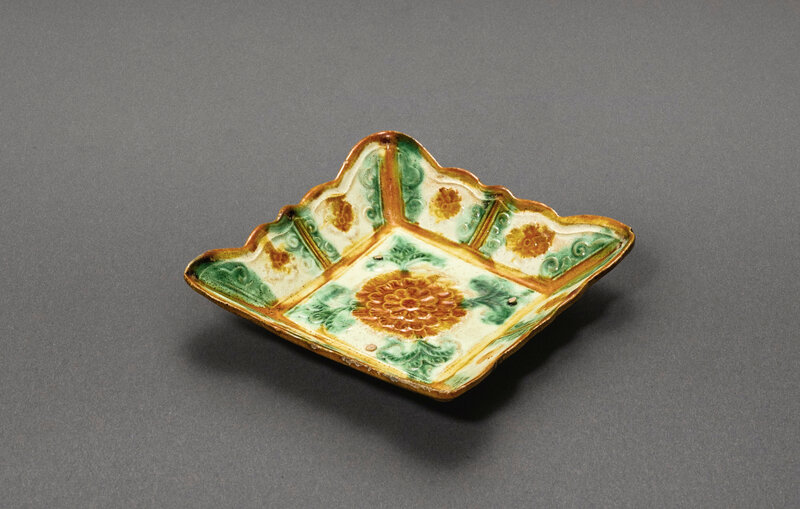




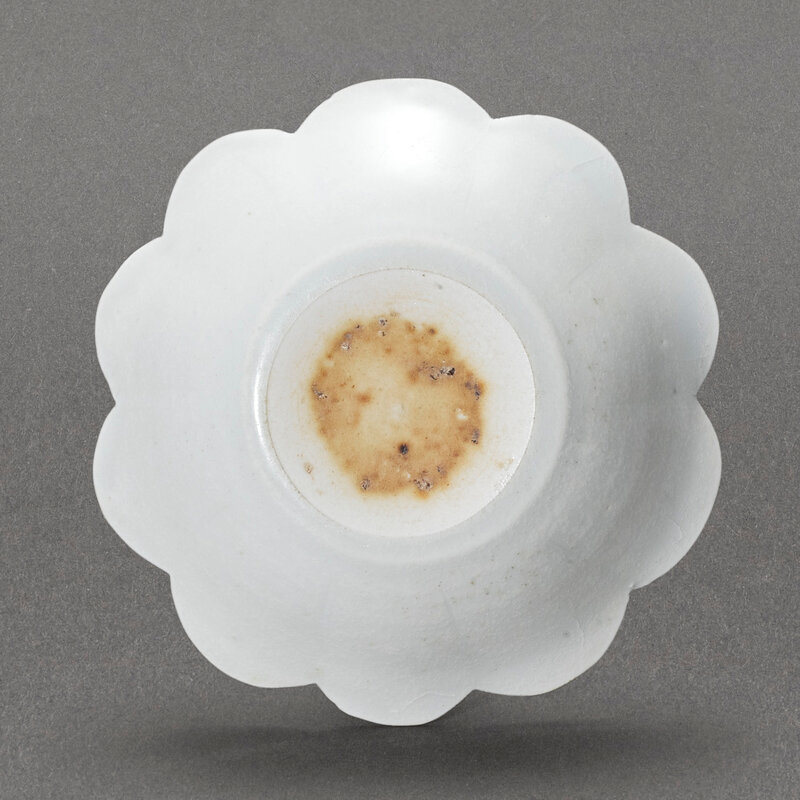
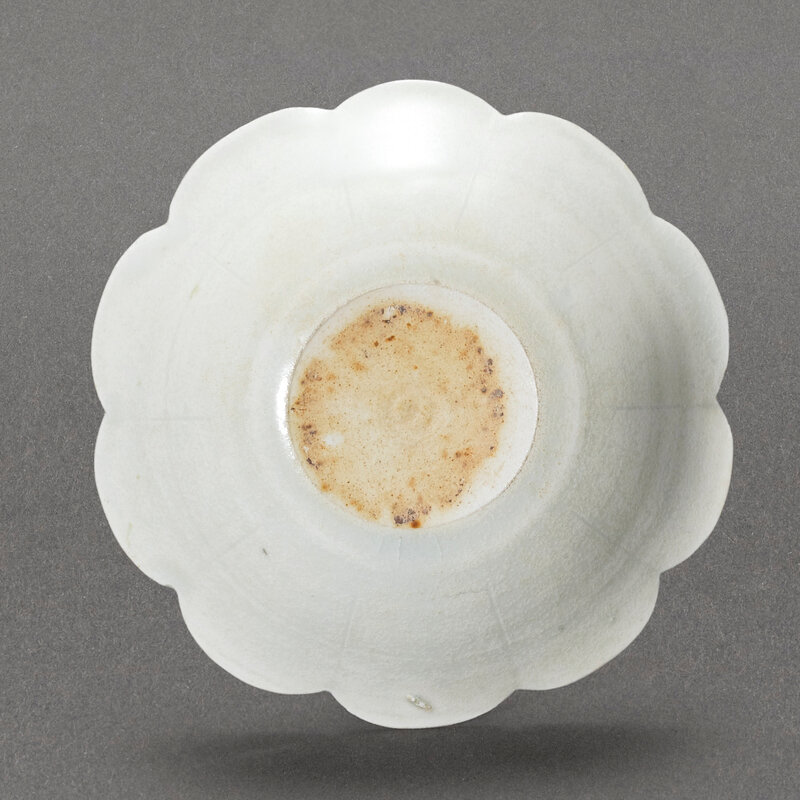
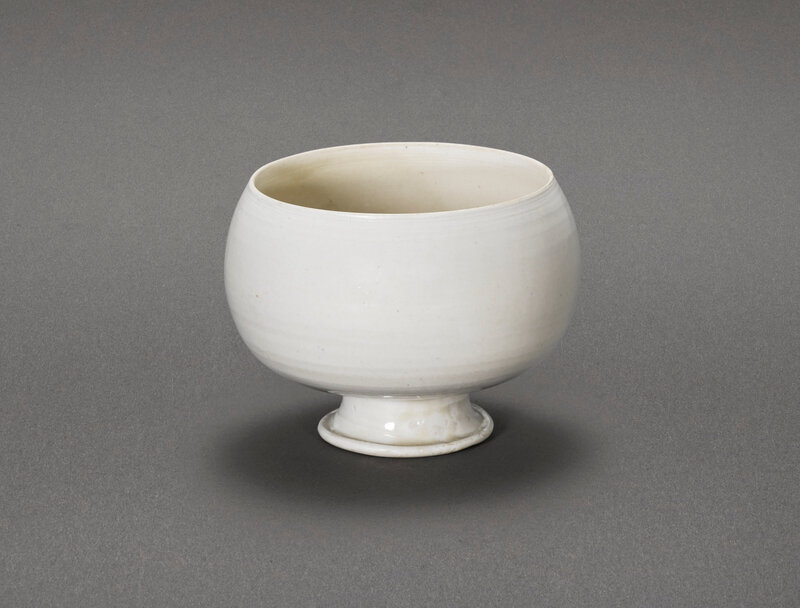
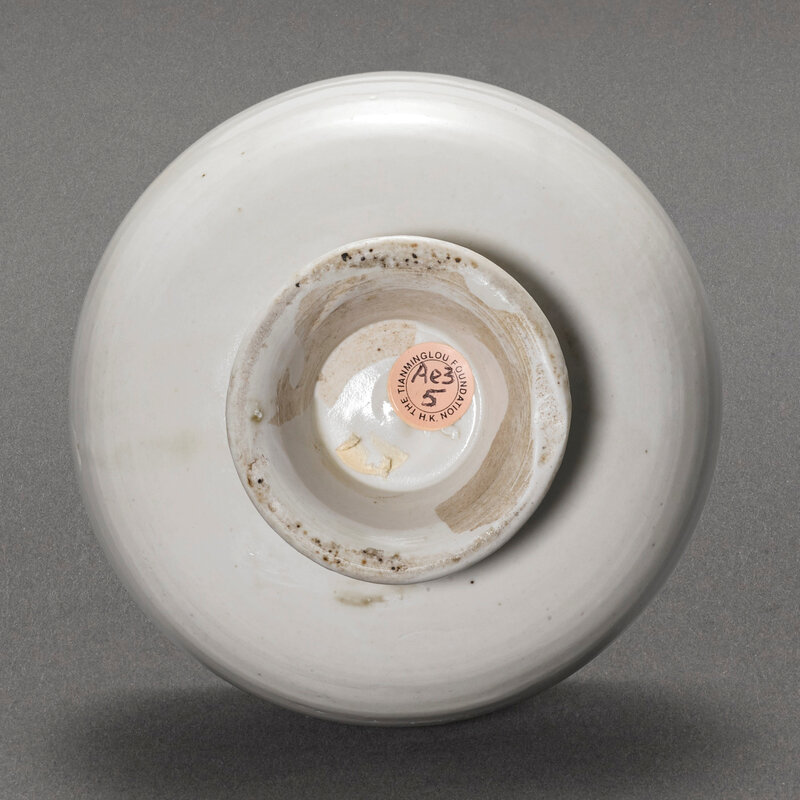






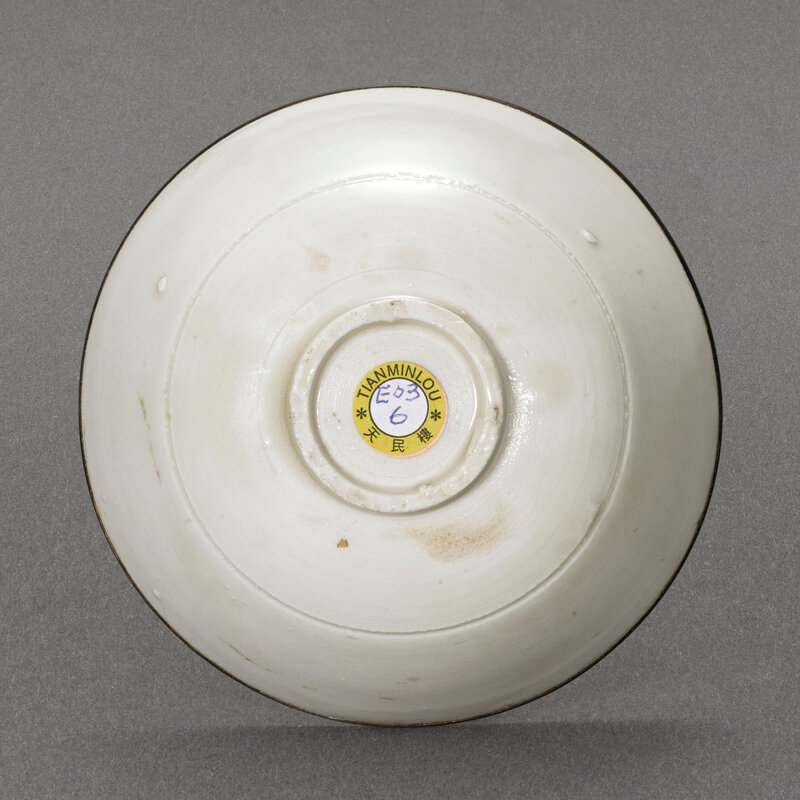




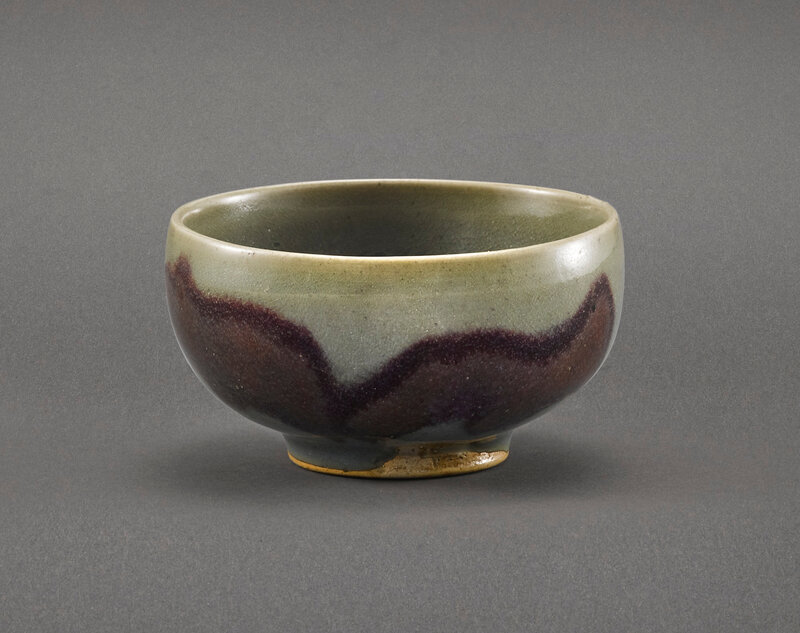










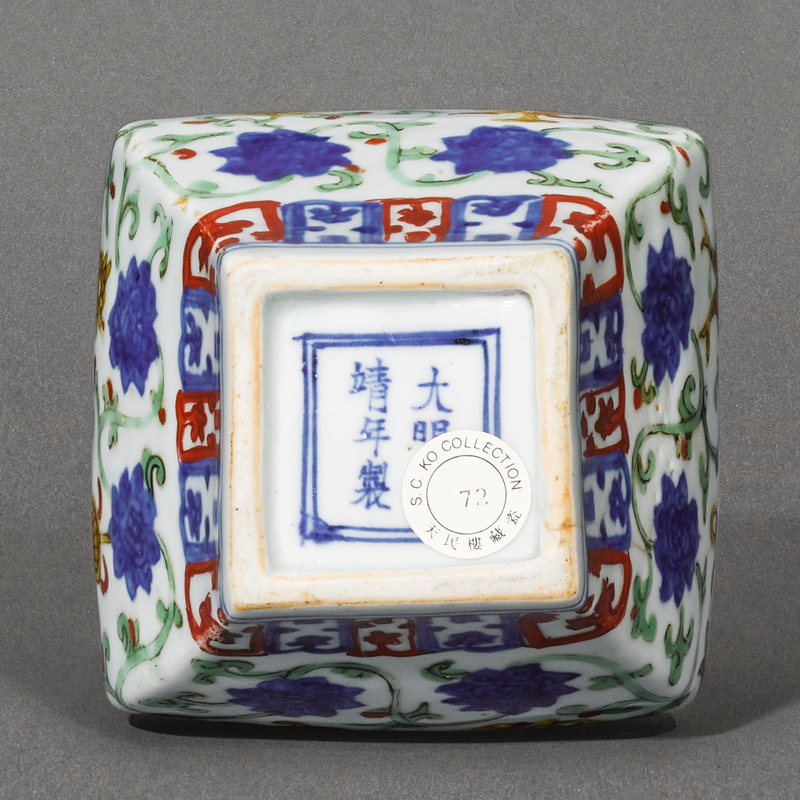


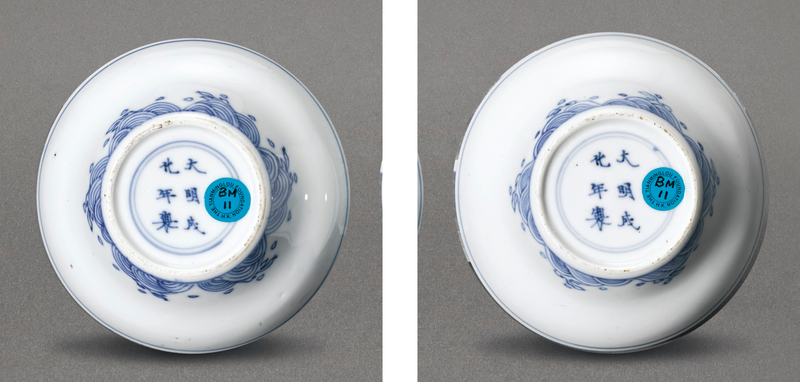

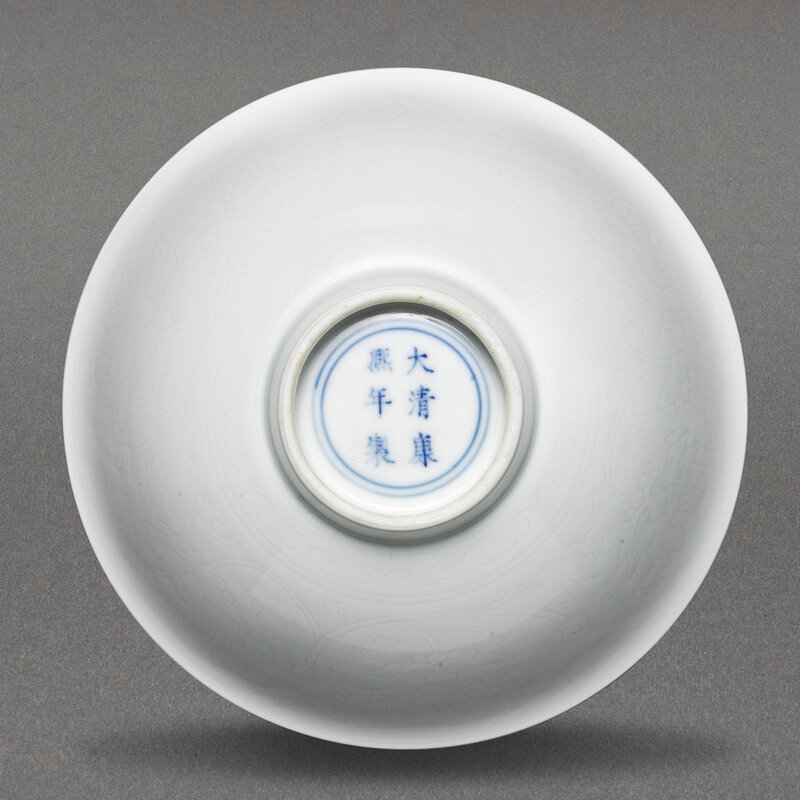

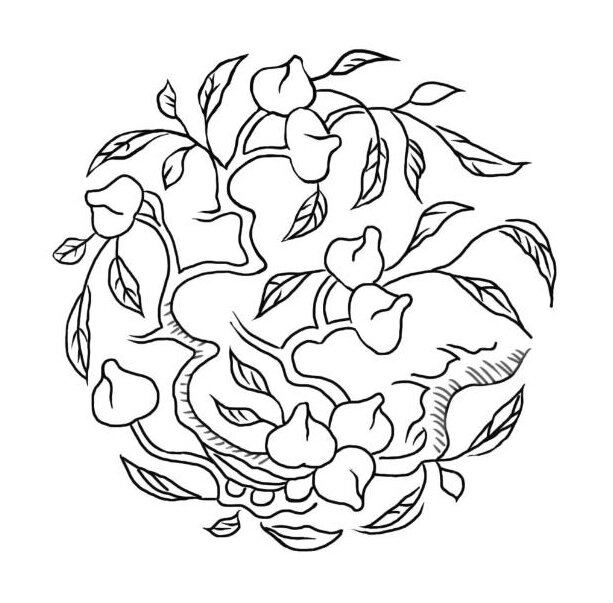


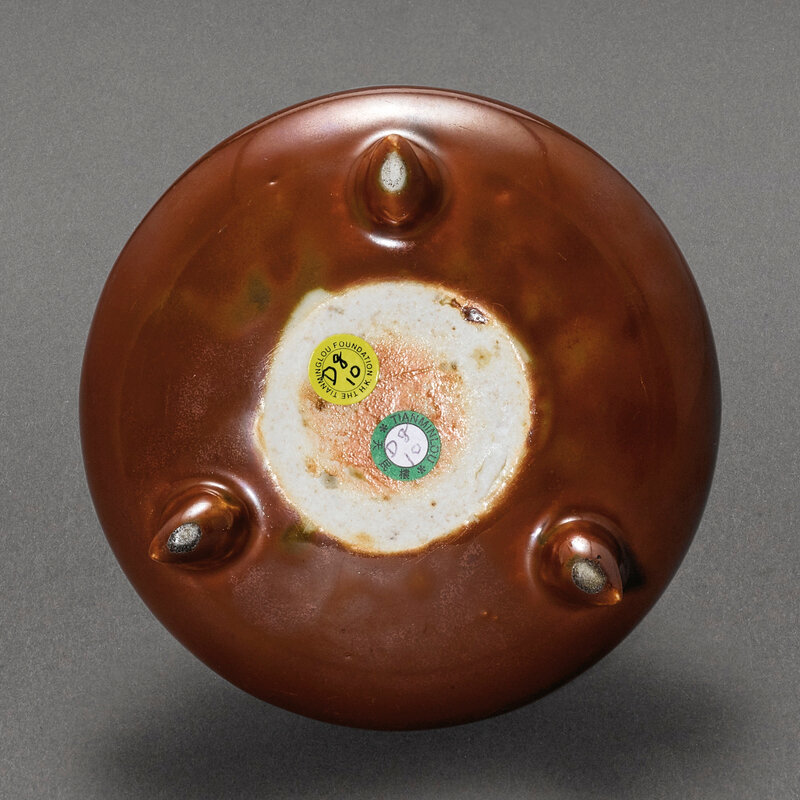
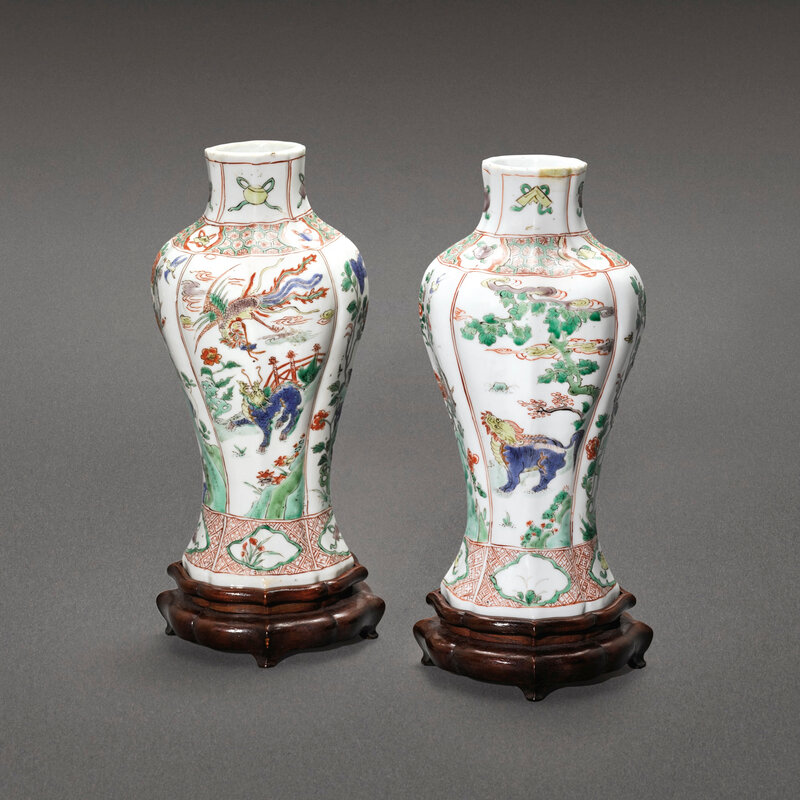





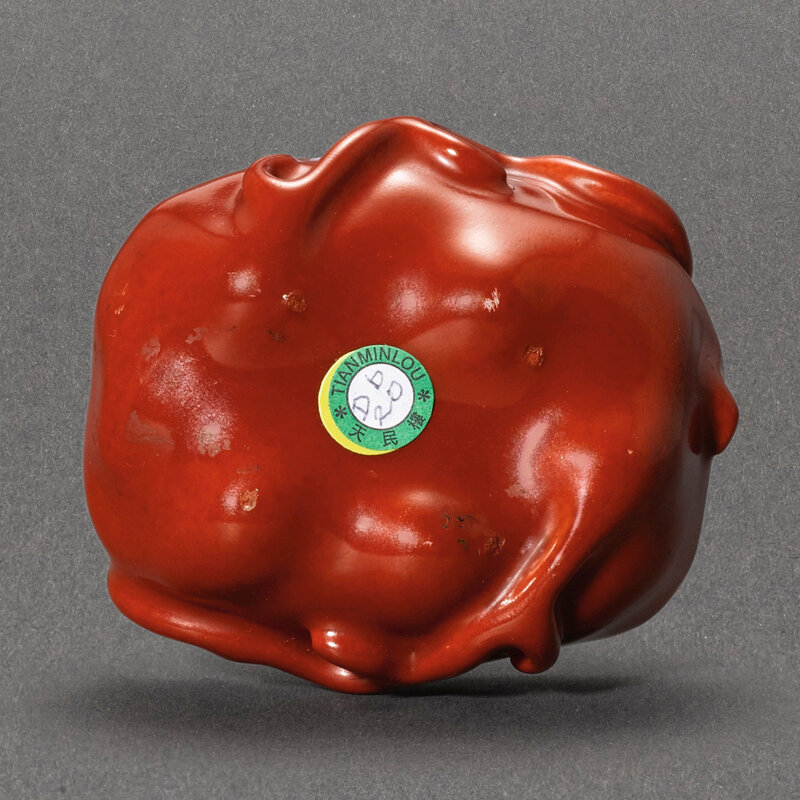
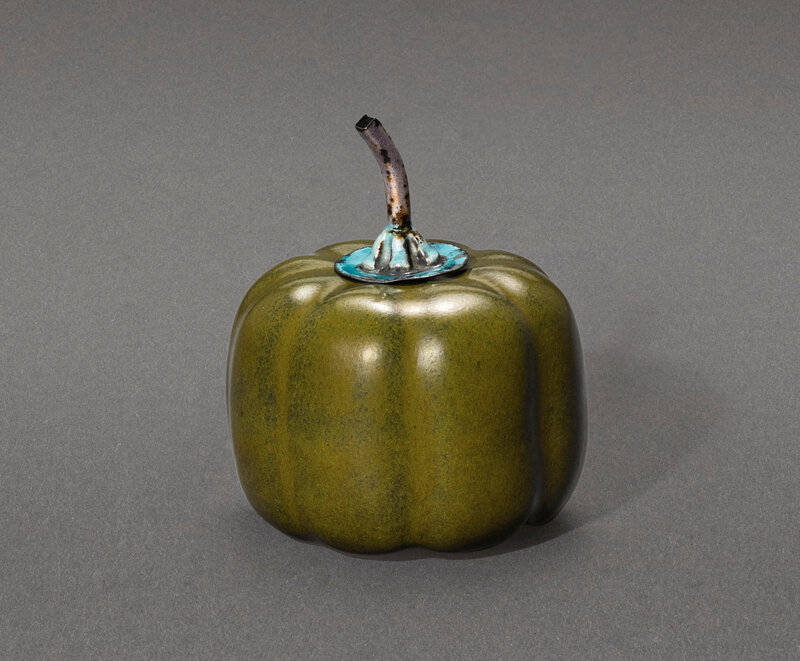




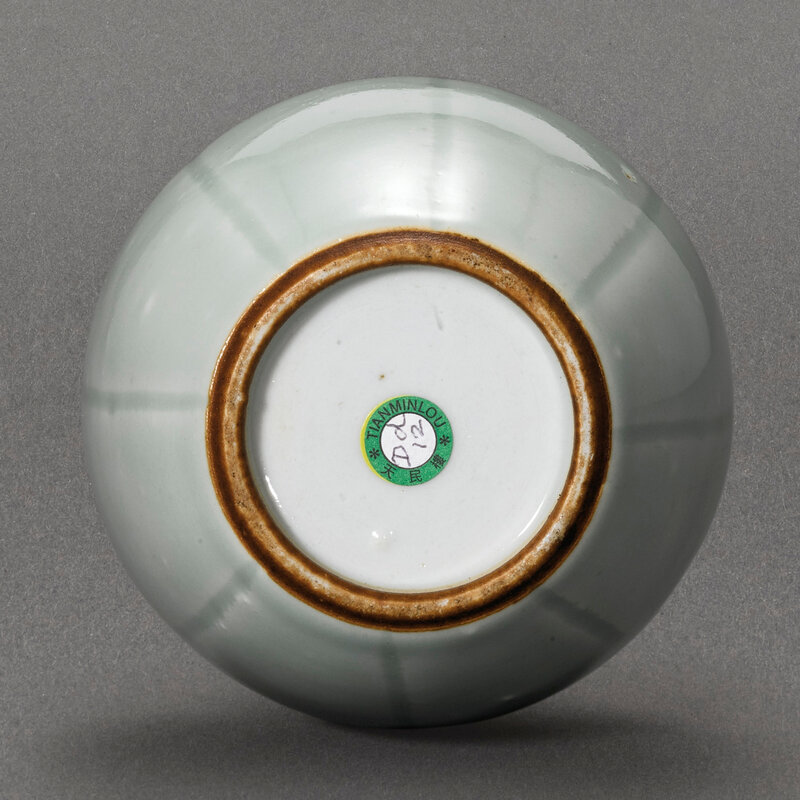

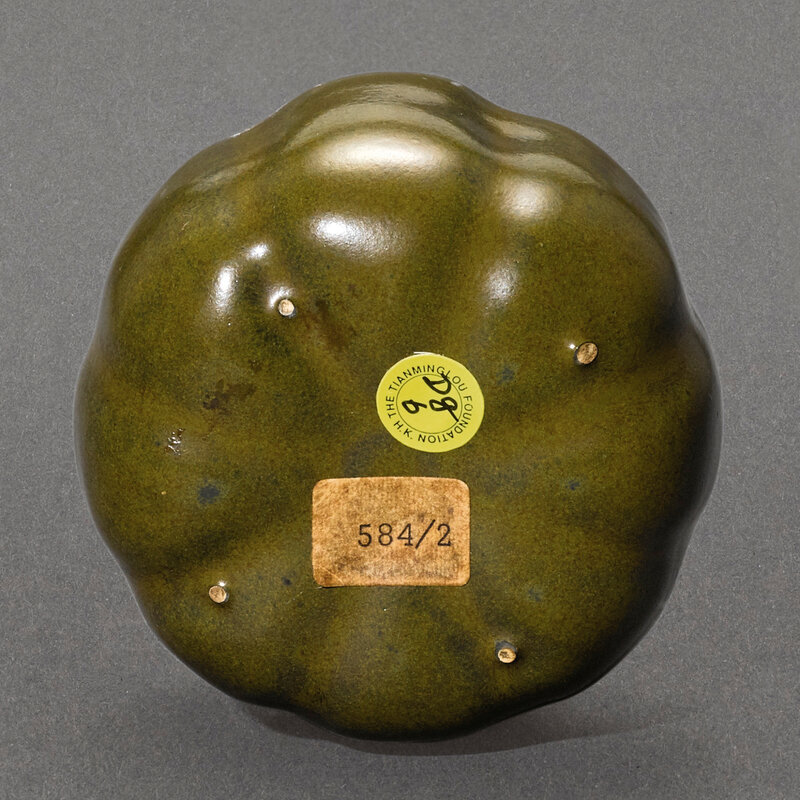
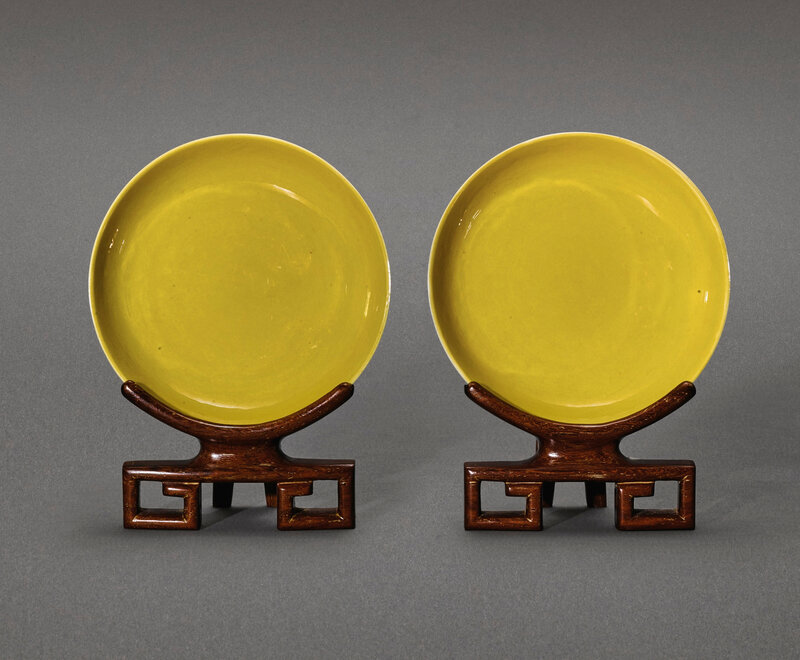







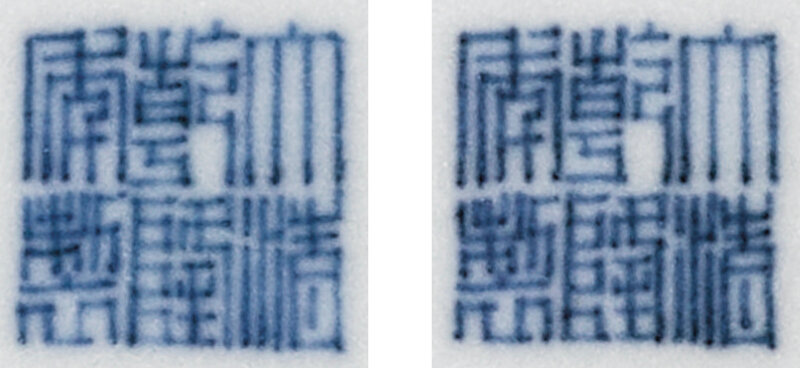
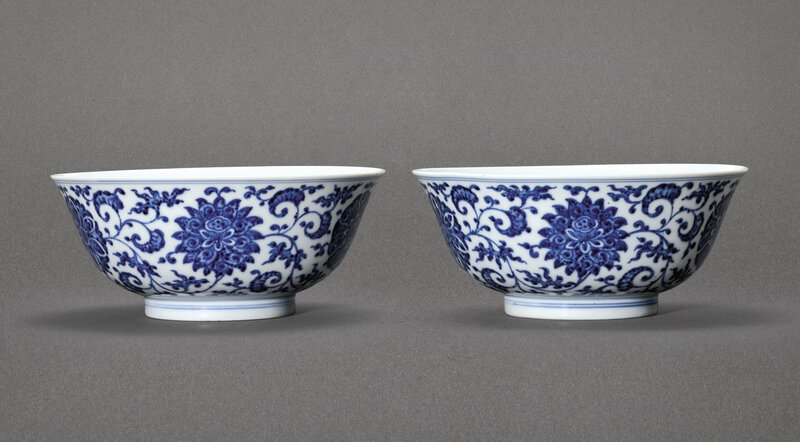











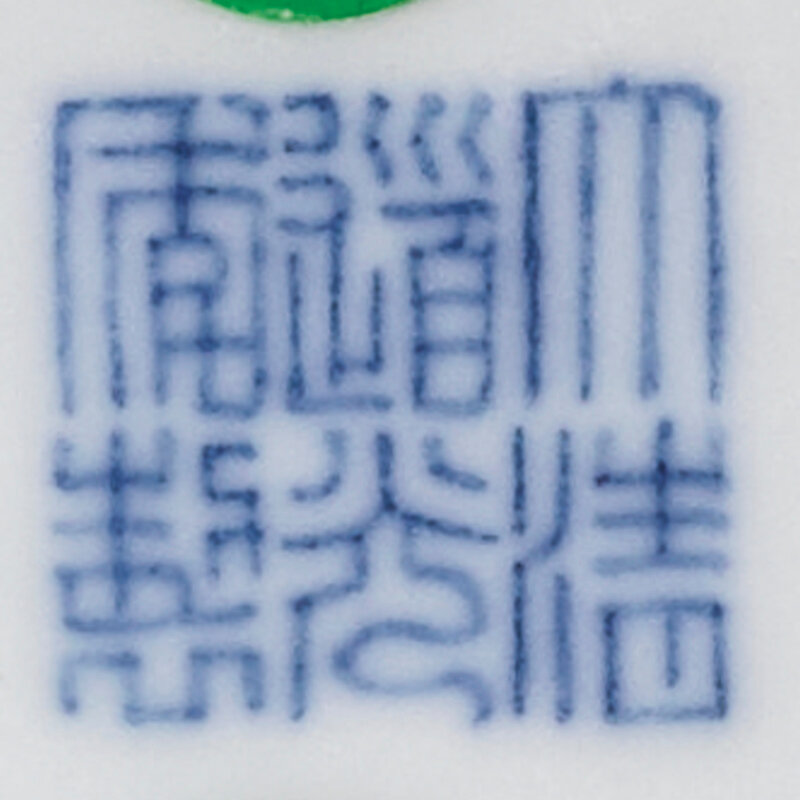


/http%3A%2F%2Fstorage.canalblog.com%2F68%2F73%2F119589%2F129761208_o.jpg)
/http%3A%2F%2Fstorage.canalblog.com%2F93%2F84%2F119589%2F129704643_o.jpg)
/http%3A%2F%2Fstorage.canalblog.com%2F35%2F94%2F119589%2F129242745_o.jpg)
/http%3A%2F%2Fstorage.canalblog.com%2F76%2F75%2F119589%2F129242347_o.jpg)